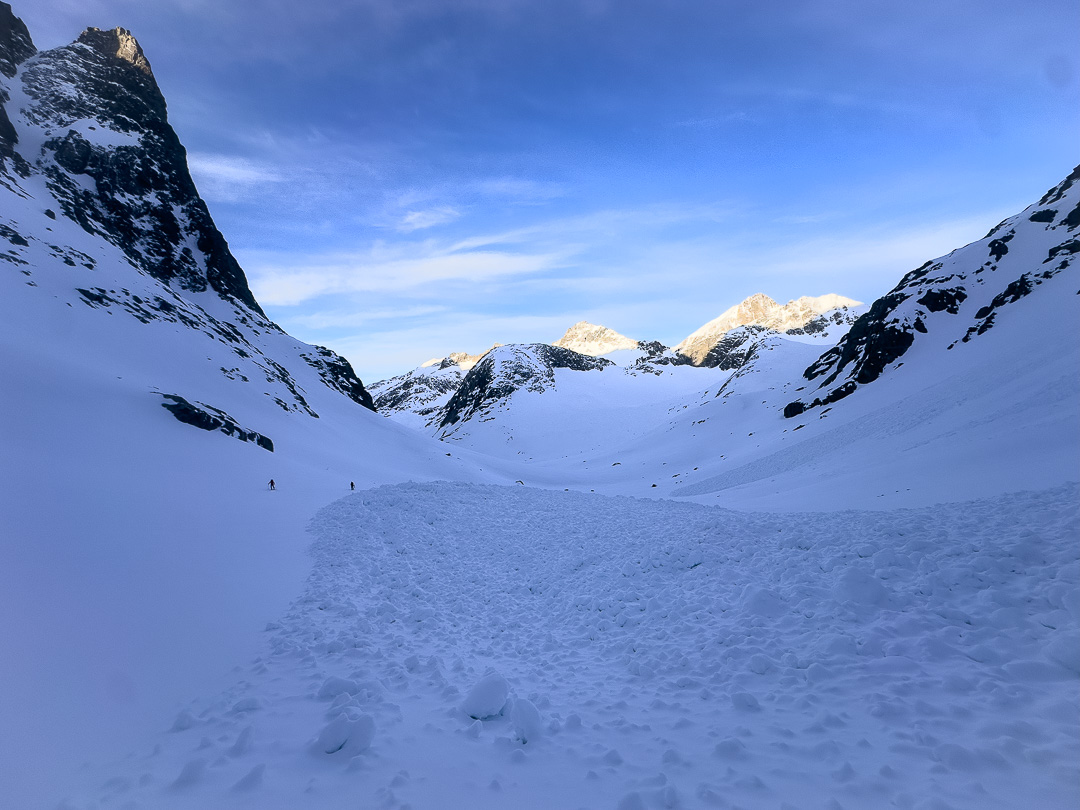Many avalanche courses taught in this country begin with a breakdown of the concept known as the avalanche triangle. This triangle represents the three components that contribute to avalanche hazard (snowpack, terrain, and weather) and the human factor falls in the middle of this triangle. Avalanche instructors break down these four factors into lessons so that students can develop a method for making safe decisions in the backcountry. All of these lessons are important, but not all are equal.
For me, the single most prevalent factor I noticed this season—and in recent seasons—is not the human factor or a poor assessment of snow stability and weather conditions, but rather poor terrain selection and terrain use. It can be said that this is an obvious mistake in any avalanche accident. Still, I am finding that as a community, our ability to select appropriate terrain and/or to move through terrain appropriately is deteriorating rapidly. I believe that causation for this involves, but is not limited to, a few things: a rapidly expanding user group, a lack of true mentorship, an overreliance on digital mapping, and a changing social landscape. I will hopefully expand on this in a different article soon, but for now I will be brief.
Throughout the U.S. and our various regional backcountry communities, we need to examine how we operate throughout the winter and what improvements we want to make next year. I see a lot of reflection in avalanche accident reports on a variety of things that went well or what went wrong in various accidents, and I can’t always help but think to myself “You’re missing the point!” People praise the helpfulness of radios, contemplate whether or not they should have locked out toe pieces, or lament group dynamics and familiarity with terrain, social media’s role in all of this, and how they missed the obvious red flags in the snowpack. I could go on and on here, but I am not stating that these are not factors in the mountains and accidents. However, at the end of the day, if you or your partners are sliding downhill in a torrent of snow, the underlying critical mistake is most likely that you chose the wrong terrain to be on that day, and/or you were using the terrain poorly. Does every accident involve a bad tour plan or a poorly placed skin track? Not necessarily, but I am seeing a trend the past few seasons where more and more accidents involve poor terrain selection and use, and there does not seem much reflection on this matter.
In every range I’ve traveled over the past few years, the amount of poorly placed skin tracks or dangerous uphill routes that unnecessarily expose people is becoming concerning, and it’s an increasing theme in avalanche accidents. It’s as if we don’t care how we get places anymore as long as we get there. Terrain use choices that would have been unthinkable in the past are now becoming common, and we are starting to see more and more group-on-group accidents.





